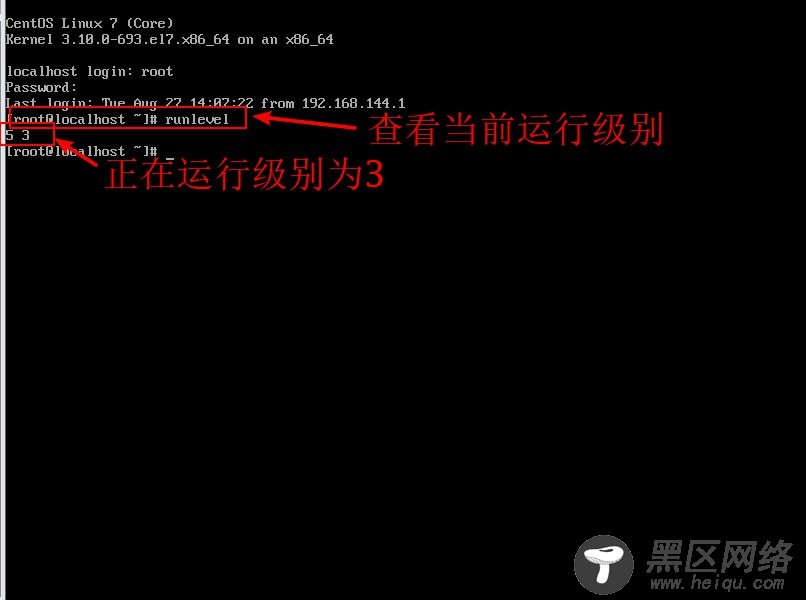CentOS 7系统服务控制
在 CentOS系统中,各种系统服务的控制脚本默认放在/usr/lib/systemd目录下。通过systemctl命令工具可以实现对指定系统服务的控制。
systemctl命令
常用格式
systemctl [控制类型] [服务名称]
控制类型
start(启动):运行指定的系统服务程序,实现服务功能。
stop(停止):终止指定的系统服务程序,关闭相应的功能。
restart(重启):先退出,再重新运行指定的系统服务程序。(慎用)
reload(重载):不退出服务程序,只是刷新配置。
status(查看状态):查看指定的系统服务的运行状态及相关信息。
[root@localhost ~]# systemctl start httpd //启动httpd服务 [root@localhost ~]# systemctl status httpd //查看httpd服务运行状态及相关信息 ● httpd.service - The Apache HTTP Server Loaded: loaded (/usr/lib/systemd/system/httpd.service; disabled; vendor preset: disabled) Active: active (running) since 二 2019-08-27 14:18:52 CST; 32s ago Docs: man:httpd(8) man:apachectl(8) Main PID: 1896 (httpd) Status: "Total requests: 0; Current requests/sec: 0; Current traffic: 0 B/sec" CGroup: /system.slice/httpd.service ├─1896 /usr/sbin/httpd -DFOREGROUND ├─1899 /usr/sbin/httpd -DFOREGROUND ├─1900 /usr/sbin/httpd -DFOREGROUND ├─1901 /usr/sbin/httpd -DFOREGROUND ├─1903 /usr/sbin/httpd -DFOREGROUND └─1905 /usr/sbin/httpd -DFOREGROUND 8月 27 14:18:52 localhost.localdomain systemd[1]: Starting The Apache HTTP Se... 8月 27 14:18:52 localhost.localdomain httpd[1896]: AH00558: httpd: Could not ... 8月 27 14:18:52 localhost.localdomain systemd[1]: Started The Apache HTTP Ser... Hint: Some lines were ellipsized, use -l to show in full. [root@localhost ~]# systemctl stop httpd //关闭httpd服务 [root@localhost ~]# systemctl status httpd ● httpd.service - The Apache HTTP Server Loaded: loaded (/usr/lib/systemd/system/httpd.service; disabled; vendor preset: disabled) Active: inactive (dead) //服务处于关闭状态 Docs: man:httpd(8) man:apachectl(8) 8月 27 14:18:52 localhost.localdomain systemd[1]: Starting The Apache HTTP Se... 8月 27 14:18:52 localhost.localdomain httpd[1896]: AH00558: httpd: Could not ... 8月 27 14:18:52 localhost.localdomain systemd[1]: Started The Apache HTTP Ser... 8月 27 14:20:06 localhost.localdomain systemd[1]: Stopping The Apache HTTP Se... 8月 27 14:20:07 localhost.localdomain systemd[1]: Stopped The Apache HTTP Ser... Hint: Some lines were ellipsized, use -l to show in full.注意:对于在实际生产环境中运行的服务器,不要轻易执行 stop 或restart操作,以免造成客户端访问中断,带来不必要的损失。
切换运行级别运行级就是操作系统当前正在运行的功能级别。 它让一些程序在一个级别启动,而另外一个级别的时候不启动。
Linux系统的有效登录模式有0~9共十种,不过沿用UNIX系统的至多6种的限制,一般只有1到6有效。从1到6 ,具有不同的功能。
运行级别Systemd的target说明0 target 关机状态,使用该级别时将会关闭主机
1 rescue.target 单用户模式,不需要密码验证即可登录系统,多用于系统维护
2 multi-user.target 用户定 义/域特定运行级别。默认等同于3
3 multi-user.target 字符界面的完整多用户模式,大多数服务器主机运行在此级别
4 multi-user.target 用户定义/域特定运行级别。默认等同于3
5 graphical.target 图形界面的多用户模式,提供了图形桌面操作环境
6 reboot.target 重新启动,使用该级别时将会重启主机
1、查看当前系统运行级别
runlevel命令
[root@localhost ~]# runlevel N 5 2、切换系统运行级别当用户需要将系统切换到其他运行级别时,可以通过传统的 init程序进行,只要使用 与运行级别相对应的数字(0~6)作为命令参数即可,或者使用systemctl 命令进行目标切换。
init程序切换
[root@localhost ~]# init 3
systemctl工具切换
systemctl isolate graphical.target 切换到图形界面(inin 5)
systemctl isolate multi-user.target 切换到字符界面(inin 3)



